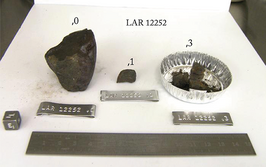The TASIAs Are Here
Accurate measurement is the very essence of science; better measurement technologies are the fuel of progress. Here, we recognize a year’s worth of innovation in The Analytical Scientist Innovation Awards (TASIAs) 2013. The 15 TASIAs enhance sample preparation, separation, identification, quantification, analysis, or a combination of these. How might you use them to develop your own innovative solutions in 2014?

1. M908
Introducing handheld high pressure mass spectrometery
Produced by: 908 Devices (www.908devices.com)
Detail: Using high pressure mass spectrometry (HPMS), this chemical detection and identification tool is handheld, battery-operated and ten times smaller and lighter than any commercial mass spectrometer device. Operating much closer to atmospheric pressures than conventional MS systems, M908 uses micro-scale ion traps in a package designed to US defense-standard (MilSpec) ruggedness and reliability. HPMS technology combined with M908’s algorithms and integrated software provides unprecedented levels of selectivity and sensitivity at low ppb levels for actionable intelligence with push-button operation.
Purpose built for safety and security applications, M908 detects and identifies trace levels of chemical weapons, TICs, explosives and drugs. M908 is:
- Simple to operate
- Quick, with one-second analysis and rapid clear down time
- Highly resistant to interferents and false-positive readings
- Rugged, with MilSpec design for extreme environments and rough handling
- Battery powered
- Light, with a total weight of 1.7kg
Impact: M908 frees the powerful capabilities of mass spectrometry from the confines of the central laboratory. It provides accurate and immediate identification of the increasing range of chemical and explosive threats; existing handheld chemical detectors work for only a handful of compounds and are plagued by false alarms. Beyond safety and security, HPMS offers a broad analytical platform for life science research, food safety testing and a host of other applications that will benefit from small footprint analysis on the workbench or handheld, field operation.
The Judges Say: “Revolutionary technology, will be an inspiration for new generations.”
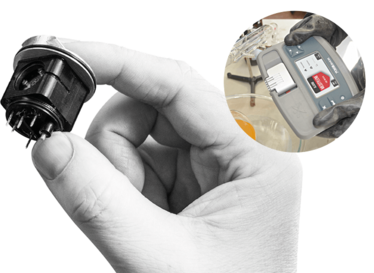
2. Orbitrap Fusion Tribrid LC-MS system
Three different mass analyzers working in harmony to create a new class of mass spectrometer
Produced by: Thermo Scientific (www.thermoscientific.com)
Detail: The Tribrid architecture provides unprecedented resolution, scan speed and versatility, letting scientists look deeper into proteomes, identify lower-abundance analytes in more complex samples, make quantitative comparisons over more experimental conditions, and elucidate structures faster. Demonstrated resolution, greater than 450,000, is an order of magnitude higher than previous instruments. It also features two built-in ion sources: one for the main ion stream and a second internal source for electron transfer dissociation (ETD), an a internal calibration feature.
Impact: The system is already impacting biological research. The Josh Coon Lab at the University of Wisconsin-Madison, for example, recently achieved comprehensive analysis of the yeast proteome in just one hour; four times faster than the field’s previous best time. Coon has said that this speed and quality can transform proteomics and will “doubtless open new avenues of research,” and predicts that comprehensive analysis of the human proteome in three to four hours is within reach.
The Judges Say: “It is a truly powerful tool!”
Click here for further information
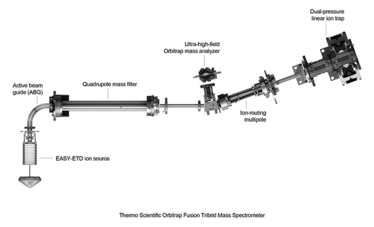
3. SmartFlare live cell RNA detection technology
Gold nanoparticles that enter cells naturally and identify desired RNA targets in live cells
Produced by: Merck Millipore (www.millipore.com)
Detail: Gold nanoparticles with duplexed oligonucleotide strands complementary to target RNA sequences, SmartFlare probes enter live cells through endocytosis. They bind targets via hybridization, consequently releasing a fluorescence signal which is measured to analyze the expression level of the a specific RNA target. Afterwards, SmartFlare probes exit the cells over time, leaving the cells unharmed, unchanged, and ready for downstream assays.
Impact: With SmartFlare detection probes, researchers can get a real-time glimpse of gene expression in live cells, and can further characterize those same cells with downstream assays. SmartFlare probes enable correlation of protein and RNA of the same cell, providing more physiologically-relevant data. Being able to sort cells based on gene expression and reuse those cells for downstream assays aids work with difficult targets or looking at the impact of modulating RNA in
live cells.
The Judges Say: “This technology is fantastic and will be of significance for a great deal of biological research.”
Click here for further information
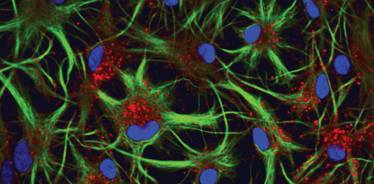
4. BID (Barrier Ionization Discharge) Detector
A new GC detector design based on innovative plasma technology
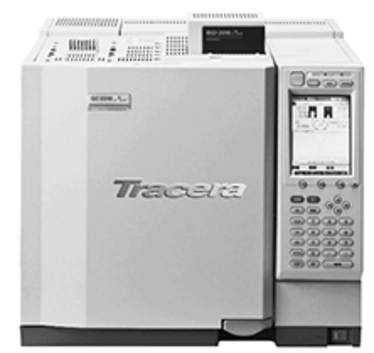
Produced by: Shimadzu (www.shimadzu.com)
Detail: The Barrier Ionization Discharge Detector (BID) is a novel universal GC detector designed for trace analysis. Using new technology, helium plasma is generated inside the BID. A quartz glass tube is used as a dielectric barrier between helium plasma and the detector electrodes, shielding them from all kinds of contamination. With the exception of helium and neon, all types of components are ionized by the light emitted from the helium plasma and are measured on ‘kovar alloy’ collection electrodes. The result is a detector capable of ultra trace analysis in combination with unsurpassed long-term stability.
Impact: The flame ionization detector (FID) is popular in gas chromatography due to its outstanding combination of long-term stability, precision and sensitivity.Unfortunately, its detection spectrum lacks permanent gases, such as nitrogen, oxygen and carbon dioxide. The BID detector fills this gap. It is more sensitive than the FID but comparable in precision and long-term stability. This makes it an ideal tool for trace measurements of permanent gases and light hydrocarbons, especially volatile oxygenated organic components.
The Judges Say: “Can replace the most important GC detector: the FID. It is better and easier to use, with a novel measurement principle.”
Click here for further information
5. EVOQ Elite ER
A liquid chromatography mass spectrometer with extended mass range for proteomics
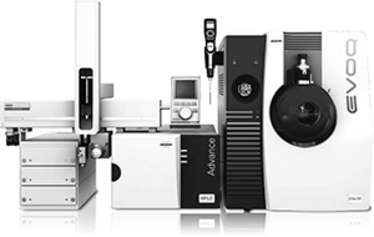
Produced by: Bruker (www.bruker.com)
Detail: Offering the unmatched proteomics testing that LC-MS TQ technology delivers, together with additional benefits to improve productivity in the routine laboratory, the Elite ER is the latest model in the EVOQ liquid chromatography mass spectrometry range. With an extended mass range of 2,000 m/z, it delivers the high sustainable sensitivity and specificity needed for rigorous proteomics quantitation over thousands of samples. Moreover, the EVOQ incorporates a number of targeted innovations for routine proteomics testing in both a discovery and hospital environment. It delivers the fastest sample-to-report time and exceptional robustness, for maximum productivity.
Impact: A range of unique hardware and software features support laboratories undertaking routine proteomics testing. The Active Exhaust provides exceptional robustness by eliminating the recirculation of sprayed gases, to reduce chemical noise and allow longer exposure to harsh matrices: less time is spent cleaning and more time running samples. PACER software delivers exception-based data review, decreasing sample-to-report time by flagging any runs that fail to meet preset criteria. EVOQ is the first solution to offer the best quality LC-MS proteomics testing in a fast and easy-to-use format, ideally suited to routine use.
The Judges Say: “Will be a big boost for proteomics.”
Click here for further information
6. ACQUITY QDa Detector
A small, easy-to-use and affordable mass detector that brings high-quality mass spectral data to chromatographic separations.
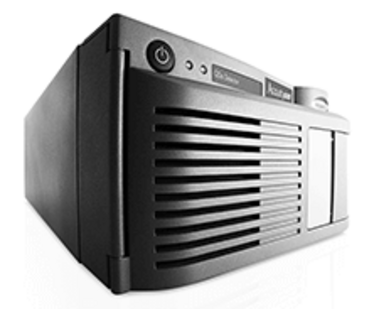
Produced by: Waters (www.waters.com)
Detail: The ACQUITY QDa Detector brings MS analysis to all chromatographers. With on/off simplicity, the detector fully automates sample analysis and eliminates sample-specific adjustments for certainty in results, from user to user and system to system. Robust and reliable enough for routine use, it generates the high quality MS data expected of a single quadrupole MS in a mass detector no larger than – and as easy to use as – a more familiar photodiode
array detector.
Impact: Armed with MS data, separations scientists can be more valuable and more confident contributors to the laboratory. The ACQUITY QDa Detector answers many of their questions: Did I synthesize what I intended to and how do I know? Is this peak really pure? Have I accounted for all components in my sample? What is the component represented by this peak? Will my method pass validation? The result: greater productivity.
The Judges Say: “Turns MS into a regular detector that can be operated by all users. Important improvement in terms of reliability of the analysis.”
Click here for further information
7. LCMS-8050
Speed and sensitivity for qualitative - quantitative analysis in MS/MS
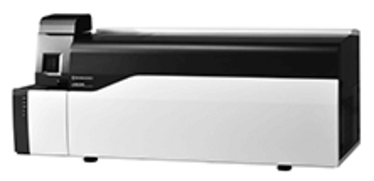
Produced by: Shimadzu (www.shimadzu.com)
Detail: This triple quadrupole LC-MS/MS features the world’s fastest data acquisition rates as well as high sensitivity and high data quality for trace-level quantitation in clinical research and other markets. Attogram-level sensitivity is achieved by the UFsweeper III collision cell, which enhances collision-induced dissociation (CID), and a heated electrospray ionization (ESI) source, which improves desolvation while enhancing ionization efficiency. The high voltage power supply enables a maximum scan rate of 30,000 u/sec with a 5 msec polarity switching time. It is now possible to include 1,000 events with up to 32 channels each for a maximum of 32,000 MRMs per analysis.
Impact: The LCMS-8050 sets a new benchmark in terms of analyses speed, sensitivity and cost of ownership. Thanks to ultra fast polarity switching (UFswitching) and ultra-high-speed scanning (UFscanning), customers are able to reduce the number of analyses per sample and, therefore, reduce cost per sample.
The Judges Say: “I am a big believer that scan speed and sensitivity is essential for MS. I like this direction.”
Click here for further information
8. Oxidative Bisulfite Sequencing (oxBS-seq)
Quantitation of covalent DNA modifications at single-base resolution
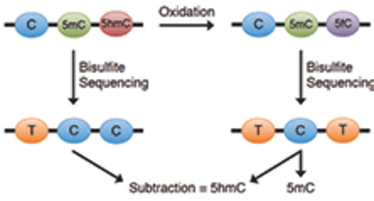
Produced by: Cambridge Epigenetix (www.cambridge-epigenetix.com)
Detail: Gene sequencing at its most basic level identifies the four bases (G,C,A, and T). For some time, cytosine (C) has been known to have a variant, 5-methylcytosine (5mC), often called “the fifth base”. In 2009, a further variant of the C base, 5-hydroxymethylcytosine (5hmC) – the sixth base – came to light. Rapidly increasing research interest has shown that 5hmC is an important epigenetic marker in cell differentiation, neurodegenerative diseases, cancer, stem cell dynamics and a variety of other processes, with distinct functions from 5mC. However, traditional sequencing methods cannot discriminate between 5mC and 5hmC. Oxidative bisulfite sequencing (oxBS-seq) is the first reliable technique to quantify 5mC and 5hmC at single-base resolution.
Impact: Discrimination between 5mC and 5hmC at single-base resolution opens up new avenues in epigenetic research that could finally explain why identical genomes don’t create identical organisms and how life on earth continues to diversify so quickly and extensively.
The Judges Say: “This could be very important in light of increasing interest in epigenetics.”
Click here for further information
9. Raster Orbital Scanning (ROS) Sampling for Raman Spectroscopy
A tightly-focused laser beam is scanned over a sample surface to acquire Raman spectra with high resolution and increased sensitivity
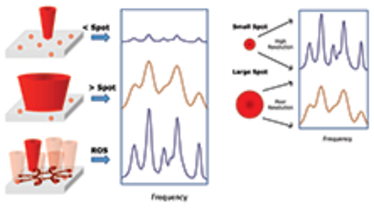
Produced by: Ocean Optics (www.oceanoptics.com)
Detail: Improved sampling of non-homogeneous mixtures by raster scanning a tightly focused beam across the surface allows ROS to provide a five- to ten-fold increase in sensitivity without sacrificing resolution. Raster scanning gives accurate measurement of surface enhanced Raman spectroscopy (SERS) samples by sampling more Raman-active compounds and decreasing the background signal. The larger sampling area allows common surfaces to be used for SERS, which is typically reserved for pristine surfaces. Improving the robustness of substrates extends the applicability and utility of SERS, allowing more analytes to be measured under more demanding conditions.
Impact: The novel ROS sampling technique increases the reliability of Raman measurements by eliminating the need for rigorous sample preparation, driving development of low cost tools that extend Raman into mainstream applications. This novel Raman sampling technique improves the reliability of traditionally demanding data acquisition and interpretation. Raman spectroscopy can now extend into medical diagnostic and biological applications. Answers are more reliable, and complex samples can be analyzed with less sample preparation. For example, ROS enables the use of low-cost, common paper as a SERS substrate for a point-of-care diagnostic test that can be read by a technician without extensive spectroscopy training.
The Judges Say: “Allows us to better see where molecules actually are!”
Click here for further information
10. Inert Flow Path Solutions
Eliminating the weakest link in GC-MS: activity within the flow path
Produced by: Agilent Technologies (www.agilent.com)
Detail: GC and GC-MS detector technology continues to advance, with parts-per-billion, indeed parts-per-trillion, detection levels becoming common. However. since detectors can only detect analytes that reach them, even the most powerful detector technology is at risk to the GC sample flow path. Activity within the flow path can adsorb or catalytically decompose sensitive or labile analytes, causing peak tailing, signal loss or totally preventing them from detection. Inertness of the complete sample flow path is critical to accuracy and sample residence or contact time, along with surface area, are the most likely contributors to activity, with the GC column and inlet liners the largest potential source of active sites. New chemistries and demanding test protocols for inertness dramatically reduce sample loss due to activity in columns and liners and investigation has turned to the remaining components in the flow path that can mask or hide active compounds.
Impact: The combined impact of specialized surface chemistries for varying materials with a solid understanding of GC design and component functionality results in an inert flow path for GC. With minimal compound loss and degradation along the flow path, the sample entering the detector is truly representative of the sample injected, ensuring more accurate quantitation of active analytes, especially at trace levels.
The Judges Say: “Reduces impact of active surfaces significantly.”
Click here for further information
11. ASCENT 2.0
Automated chromatography data review and analysis expert software
Produced by: Indigo Biosystems (www.indigobio.com)
Detail: ASCENT 2.0 gives labs the ability to practice true review-by-exception, bringing labs closer to full auto-verification. Key features include expert peak quantitation, consistent baselines, automatic calibration, and comprehensive, user-configurable quality rules. Specifically, its expert peak quantitation uses a one-of-a-kind peak picker based on a digital noise filter algorithm. ASCENT uses exponentially-modified Gaussian distribution (EMG), which minimizes peak distortion while simultaneously maximizing the signal-to-noise ratio of the peak area. It can be used with any instrument data and integrated into laboratory lnformation management systems (LIMS).
Impact: Customers are reporting a 90 percent reduction in the number of peaks that require review, a 75 percent drop in labor costs for data review, and a 50 percent drop in sample rework. Also, with the secure hosted environment, users are able to review their data anywhere, anytime, giving chromatography reviewers a new sense of autonomy. These benefits align to move chromatography/mass spectrometry analysis towards full auto-verification.
Click here for further information
12. Chromaster Ultra Rs
UHPLC system with high resolution and sensitivity
Produced by: VWR/Hitachi (www.vwr.com)
Detail: Users wanted a UHPLC system capable of delivering the performance necessary to couple two high-resolution columns, resulting in a column with an equivalent length of 500 cm, a 3 mm internal diameter, and 1.9 µm particle size. However, with a backpressure of 1350 Bar at a flow rate of 0.5 ml/min, a 1400 bar pump had to be designed. In addition to new components, Liquid Beat Technology (LBT) was specially designed to enable highly stable, very high pressure pumping. The plunger is controlled with a changeable stroke, based on calculated solvent compressibility and a sensor on each pump head enables stable pumping.
Impact: The engineers at Hitachi were given a challenge: to design a system capable of providing the resolution and sensitivity needed for related compound analysis in order to meet potential challenges in regulated laboratories. The Chromaster Ultra Rs is the result.
13. 3D Preparative Gas Chromatography (GC) System
A preparative multidimensional (MD)-GC system that collects pure compounds from complex samples
Produced by: Department of Analytical Chemistry, School of Pharmacy, University of Messina, Italy
Detail: The instrument consists of three GC systems, equipped with three Deans switch transfer devices, between two subsequent columns and the collection system. The switching elements, located inside the ovens, are connected to three advanced pressure control systems, which supply helium carrier gas at constant pressure. The GC systems are equipped with split/splitless injectors and a flame ionization detector. A lab-constructed collection system, based on a heated aluminum block (300 °C) equipped with a PT-100 sensor, is located within the GC oven roof.
Impact: Structural elucidation of molecules is challenging and requires the isolation of pure compounds. An exemplar: When a single apolar column was used, an analyte purity of 88.6 percent was attained; this was raised to 92 percent when a bidimensional “apolar-polyethylene glycol” instrument was used. The addition of a third analytical column, plus a third transfer device to direct the GC effluent to the collector, gave 99.1 percent purity. The MD-GC is a promising tool for the characterization of unknown molecules, as well as for the collection of known components from complex samples.
14. Optilab UT-rEX
A refractive index detector for ultra high performance liquid chromatography (UHPLC) systems
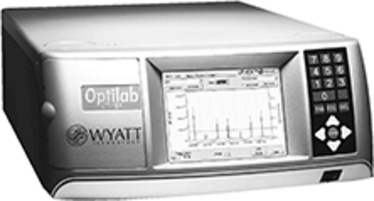
Produced by: Wyatt Technology (www.wyatt.com)
Detail: Specifically designed as a refractive index (RI) detector for use with UHPLC systems using columns packed with small beads, this instrument combines miniaturized components, semiconductor photodiode technology and computer algorithms. It can be operated either stand-alone, as the sole on-line detector or in combination with another detector, such as UV/Vis absorption. The temperature regulation capabilities allow control of the flow path above and below ambient, providing wide dynamic range and the absolute refractive index measurement of solutions, improving resolution, sample and solvent quantity.
Impact: The Optilab UT-rEX adds RI for UHPLC applications, augmenting MS and evaporative light scattering. The instrument’s low dead volume of <1.5μl, offers superior resolution. The full range of instrument detection is fully sensitive and always present, while stable RI baselines and RIS signals further enhance sensitivity.
Click here for further information
15. 1260 Infinity Automated Purification System
An automated LC-MS system that provides pure fractions without method development or scale-up work
Produced by: Agilent Technologies (www.agilent.com)
Detail: Scientists can analyze samples with this generic ultra high-performance liquid chromatography/mass spectrometry (UHPLC/MS) method to confirm successful synthesis of a target compound in a few minutes. On the same combined analytical and preparative system they can start the purification of that sample up to gram quantities without any calculations, method translation or vague guesses about optimum conditions. A focused solvent gradient targeted at the compound of interest ensures maximum column loadability, purity and recovery for the purification step. Picking up the fractions and recovery collection is all that needs to be done.
Impact: Without in-depth training on preparative chromatography, chemists, biologists, or engineers can finally benefit from state-of-the art separation efficiency. Specialized chromatographers can move away from routine purification work to focus on truly difficult separations. Economics of using preparative chromatography are improved as maximum efficiency can be achieved with every sample.

